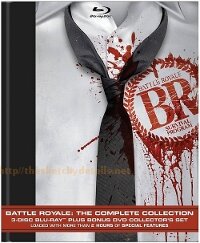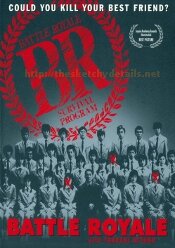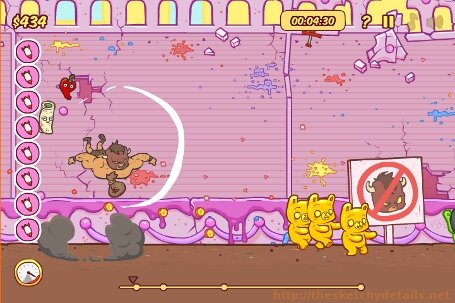On this edition of Instant Watch, we take a look at a unique horror series from South Korea. The Whispering Corridors series, also known as the High School Girl’s Ghost Story series, is a unique horror concept. If you’ve ever heard the original concept behind the Halloween series in America, you’ll know that it’s hard to get it to come across. Essentially, Whispering Corridors films are thematic sequels. Each film tells a stand-alone horror story told in an all girls high school with a ghost. How the ghost is used, what kinds of students are focused on, and the source of the horror is as widely varied as you can imagine.
The first three parts of the series are available to stream right now on Netflix Instant.
Whispering Corridors (1998)
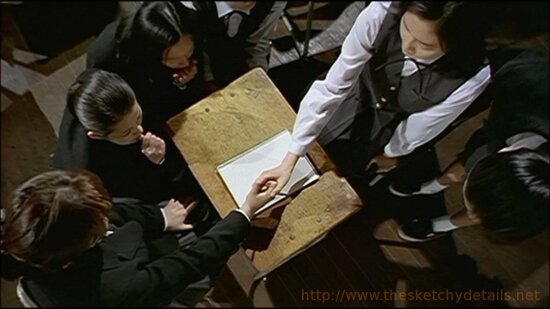
On the eve of the new school year, senior class teacher Mrs. Park dies under mysterious circumstances on the school grounds. She is found by friends Ji-oh and Jae-yu hanging from the school walkway. Replacement teacher Mr. Oh threatens, taunts, and beats the students to get them to cooperate with his policy of not discussing Mrs. Park’s death. When students and teachers begin to experience strange phenomena in the school, it becomes clear that ignoring the circumstances of the death will not stop history from repeating itself.
Whispering Corridors is a bold horror film for many reasons. For starters, the high school students actually talk, walk, move, behave, and look like actual high school students. The casting and screenplay are equally great. Writer/director Ki-hyeong Park and co-writer Jung-Ok In do not rely on making the students wise beyond their years. They don’t sexualize the girls and they don’t have them act like mini-adults. These are young people about to be thrown into the real world and they’re still finding their way. It takes guts to actually write realistic teenagers without toning down the content of the film.
That’s the second great part about Whispering Corridors. This is brutal. The violence when the ghost attacks is genuinely disturbing. This isn’t a glossy Hollywood slasher; it’s not even a campy and gritty dark comedy/horror like you regularly see come out of Japan and China. This is borderline gialli without the exaggerated color washes to make the nightmarish violence seem safe. There are scenes in this film that will stick with me for a long time because of the execution and realistic style.
The most disturbing aspect isn’t anything related to the ghosts; it’s the dichotomy between new and old teaching methods on display in the film. Until March of this year, teachers in South Korea were permitted to physically strike students as punishment. Whispering Corridors hinges upon a critique of discipline in South Korean schools. The new teacher that the students respect instantly is kind, caring, and compassionate, while the older teachers that strike their students are cruel, miserable, and self-absorbed. It’s an interesting subtext that slowly builds to a dual supernatural and realistic climax. The realistic climax is far more haunting than the ghost, though the ghost exists as a foil to the cause of the realistic climax.
Whispering Corridors is a great introduction to the eponymous K-Horror style that influenced horror films all over the world in the late 90s/early 2000s. Though Japan may have produced the film with the iconic long-haired ghost girl (Ringu), South Korea is the country that set the standard in social commentary as fuel for graphic ghost stories.
Rating: 7/10
Memento Mori (1999)

High school girl Min-Ah finds a diary on school grounds. She begins to read it everywhere she goes. It describes the friendship turned love affair between two of her fellow students, Hyu-Shin and Shi-Eun. While everyone else in the class acts far younger than they should, Min-Ah gets pulled into a shockingly mature and disturbing relationship. She becomes obsessed with learning everything she can about the young lovers. Even the shocking suicide of one of the girls is not enough to stop her new obsession.
Memento Mori, a spiritual successor to Whispering Corridors, strikes a very different tone. This film is all about suspense, expectations, and the blurring between reality and imagination. Min-Ah doesn’t just read her classmates’ shared diary; she lives it. There is no way of knowing what the truth actually is because Hyu-Shin and Shi-Eun’s romance is played out like a perfect movie romance in Min-Ah’s mind. The girls act very differently when they’re in person. Only Min-Ah can’t tell the difference.
This film is less a horror story than an almost-Gothic romance. Hyu-Shin and Shi-Eun are the most compelling characters in the film and for good reason. As over the top as their story becomes, they are at least developed beyond stereotypes. The same cannot be said for the rest of the characters in the film. From the teacher all the students have a crush on to the class clown, every other character in the film acts in the most cliched manner possible. Even Min-Ah becomes a caricature of a young woman possessed by her imagination. Despite a solid performance by Gyu-ri Kim, we never grow to actually care about Min-Ah’s story. Her life becomes dedicated to to Hyu-Shin and Shi-En’s story. They absorb her character. The audience is just never given anything to attach us to the actual protagonist from the beginning.
The film mostly takes on a surreal and cerebral horror style. There are flashes of strange and horrifying things the disappear as soon as they arrive. The dream-like sequences are especially compelling. Memento Mori finds its greatest strength in this absurd building of suspense. It’s similar to the style of the Japanese horror film Spiral, where bland characters are pushed out of their mundane routines by shocking glimpses of otherworldly horror they cannot fight or begin to understand. The difference here is that this film would have worked better as a paranormal romance. There is no reason that a ghost story needs to be a horror film. This film was shoe-horned into the horror form just to be called a sequel to Whispering Corridors.
Despite its shortcomings, Memento Mori makes such a strong statement with the blurred reality of Hyu-Shin and Shi-Eun’s relationship that its worth watching. You care about those characters’ pasts even after only one is left standing. The great mystery becomes not the behavior or Min-Ah but the truth behind the doomed high school romance.
Rating: 7/10
Wishing Stairs (2003)
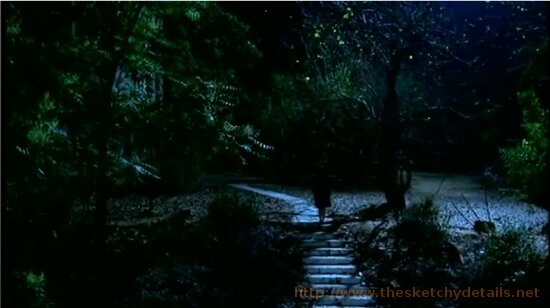
At an all girls art boarding school, the ballet students are receiving the opportunity of a lifetime. One girl from the school will get to compete for a scholarship to an exclusive Russian ballet academy. Best friends Kim So-Hie and Yun Jin-Seong have both decided to audition. Kim is the favorite to win and all the other girls, even her best friend, are willing to do anything to beat her. Yun remembers a story about a magical set of stairs on the school’s campus. If a twenty-ninth step appears, the spirit of a fox will grant your wish. Can she get the boost she needs to win?
Wishing Stairs is a cautionary wish film in the vein of a Wishmaster or Monkey’s Paw. Two girls decide to climb the stairs during the film and both manage to uncover the mysterious twenty-ninth step. One girl wishes for success; the other girl wishes for companionship. The two become locked in a deadly battle of wishes that drag them further and further into dark territory.
This Whispering Corridors sequel once again brings the series into new territory. There’s a darker comic appeal to this film, creating massive sight-gags out of body image, eating disorders, and serious injuries. It also thoroughly plays into the iconic image of the stringy-haired pale ghost starting halfway through. Spirits appear and disappear in the blink of an eye. They hide behind the characters and bend all natural laws to freeze frame forward in one segmented step. It’s a conceit used to strong and novel effect here.
The story of Wishing Stairs is confusing. Unlike the original Whispering Corridors film, these high school girls are acting wise beyond their years. At least the main protagonists are. The nature of their relationship is up for debate. Sometimes, they act like young girls playing dress up; other times, they act like feuding lovers in a long term relationship. The film’s inability to articulate the relationship between the two girls is a huge distraction. It’s made worse by the presence of a third girl, unpopular art student Eom Hye-ju. She becomes obsessed with the popular ballerinas, entangling herself in every facet of their lives. Is she also in love with them or is she just looking for a friend?
What works for Wishing Stairs is a bizarre conceit of nightmares. The characters wake up so often from dreams that you don’t know what is real and what is fake. Is the school actually haunted or are the three main characters just waking from a dream? Can an extra step appear on the wishing stairs or is it just a fantasy? While this further blurs the relationship between the characters, it does wonders to rise this film above the standard tropes of wishes gone wrong films. If the step doesn’t exist, does anything that happens in this film actually happen? Are we just trapped in a never-ending string of nightmares or a twisted alternate reality where murder and mayhem go unnoticed by everyone, even the victims?
Wishing Stairs is a compelling and confusing horror film that works all the better for not being straight forward. Though the character relationships are a bit too muddy to understand, the movement of the story, effects, and performances make it a must see.
Rating: 6/10
